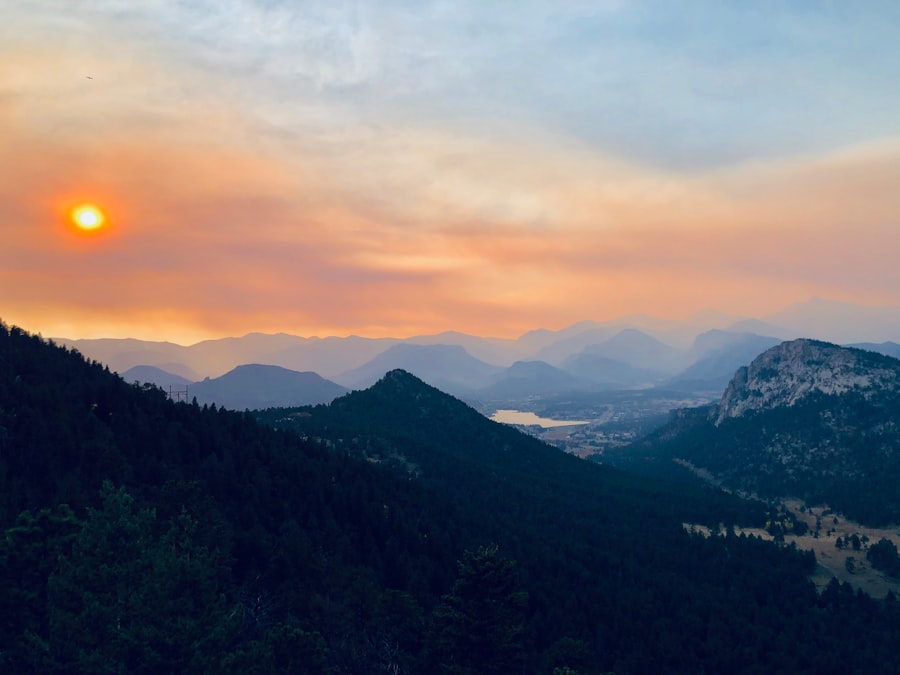The Drake Passage, a body of water that separates South America from Antarctica, is notorious for its unpredictable weather and tumultuous seas. For adventurers and explorers, crossing this passage is often seen as a rite of passage, a test of endurance and resilience. The waters are known for their fierce currents and high waves, which can turn a seemingly calm journey into a harrowing experience.
Many have attempted to navigate these waters, but not all have succeeded, making the Drake Passage a formidable challenge that demands respect and preparation. The allure of the Antarctic continent lies just beyond the Drake Passage, drawing explorers from around the globe. However, the journey is fraught with peril, as the passage is often described as one of the roughest stretches of ocean on Earth.
The combination of strong winds, shifting currents, and the confluence of the Atlantic and Pacific Oceans creates a volatile environment that can test even the most seasoned mariners. For those who dare to embark on this expedition, the challenge is not merely physical; it is also a mental battle against fear and uncertainty.
Key Takeaways
- Conquering the Drake Passage is a significant challenge due to its treacherous waters and unpredictable weather conditions.
- Proper training and equipment are essential for preparing for an Antarctic expedition, including physical fitness and specialized gear.
- The Antarctic landscape is breathtakingly beautiful, with vast icy landscapes and stunning natural formations.
- Wildlife encounters with penguins, seals, and whales are a highlight of the Antarctic experience, offering unique and unforgettable moments.
- Navigating the Drake Passage requires skill and caution due to its dangerous waters, making it a thrilling and intense part of the expedition.
Preparing for the Expedition: Training and Equipment
Preparation for an expedition across the Drake Passage requires meticulous planning and rigorous training. Participants must undergo extensive physical conditioning to ensure they are fit enough to endure the harsh conditions they will face. This training often includes endurance exercises, strength training, and simulations of rough sea conditions to acclimatize the body to the potential challenges ahead.
Mental preparation is equally important, as participants must cultivate resilience and adaptability in the face of adversity. In addition to physical training, equipping oneself with the right gear is crucial for a successful expedition. High-quality waterproof clothing, sturdy boots, and specialized gear designed for extreme weather conditions are essential components of an explorer’s arsenal.
Safety equipment such as life jackets, emergency beacons, and first aid kits are also vital for ensuring the well-being of all team members. The right equipment not only enhances safety but also contributes to the overall experience, allowing explorers to focus on the beauty and wonder of their surroundings rather than worrying about their comfort or safety.
The Beauty of the Antarctic Landscape

As explorers finally set foot on the Antarctic continent after conquering the Drake Passage, they are greeted by a breathtaking landscape that seems almost otherworldly. Towering icebergs glisten in shades of blue and white under the bright sun, while vast expanses of snow stretch as far as the eye can see.
This pristine environment serves as a reminder of nature’s raw beauty and power. The Antarctic landscape is not only visually stunning but also rich in geological history. Glaciers carve their way through mountains, leaving behind unique formations that tell stories of millennia past.
The silence of this remote region is profound, broken only by the sounds of cracking ice or distant wildlife calls. For many explorers, this serene atmosphere fosters a deep sense of connection to nature and an appreciation for the planet’s fragile ecosystems. The beauty of Antarctica is not just in its scenery; it lies in its ability to inspire awe and reflection in those fortunate enough to experience it.
Wildlife Encounters: Penguins, Seals, and Whales
| Wildlife | Encounter Frequency | Location |
|---|---|---|
| Penguins | High | Antarctica, South Georgia Island |
| Seals | Moderate | Antarctica, New Zealand, South Africa |
| Whales | High | Antarctica, Alaska, Norway |
One of the most enchanting aspects of an Antarctic expedition is the opportunity to encounter its diverse wildlife. Penguins, with their charming waddles and playful antics, are often the first animals explorers encounter upon arrival. These flightless birds thrive in the harsh conditions of Antarctica, showcasing remarkable adaptations that allow them to survive in such an extreme environment.
Observing their social behaviors and interactions provides a glimpse into their fascinating lives. Seals also inhabit these icy waters, often seen lounging on ice floes or swimming gracefully through the frigid sea. Species such as leopard seals and Weddell seals are common sights during expeditions, each exhibiting unique characteristics that intrigue observers.
The sheer size and power of these marine mammals leave a lasting impression on those fortunate enough to witness them in their natural habitat. Additionally, whales can often be spotted breaching in the distance or gliding majestically beneath the surface, adding to the thrill of wildlife encounters in this remote region.
Navigating the Treacherous Waters of the Drake Passage
Navigating the Drake Passage is an experience that demands skill and expertise from those at the helm. The unpredictable nature of these waters requires constant vigilance and adaptability from crew members. Experienced sailors understand that conditions can change rapidly, necessitating quick decision-making to ensure the safety of everyone on board.
The journey across this passage is not merely about reaching a destination; it is about mastering the art of navigation in one of the most challenging maritime environments on Earth. The thrill of sailing through these turbulent waters is matched only by the sense of accomplishment felt upon successfully crossing them. Each wave that crashes against the vessel serves as a reminder of nature’s power, while every calm moment offers a chance for reflection and appreciation.
For many explorers, navigating the Drake Passage becomes a defining moment in their journey—a testament to their determination and resilience in overcoming obstacles.
Overcoming Adversity: Weather and Sea Conditions

The weather conditions in the Drake Passage can be mercurial, presenting challenges that test even the most prepared expeditions. Sudden storms can arise without warning, bringing fierce winds and towering waves that threaten to capsize vessels. Explorers must remain adaptable and ready to respond to changing conditions at a moment’s notice.
This unpredictability adds an element of excitement to the journey but also underscores the importance of teamwork and communication among crew members. In addition to rough seas, temperature fluctuations can pose significant challenges for those traversing this region. Explorers must be equipped to handle extreme cold while remaining vigilant against hypothermia and frostbite.
The ability to work together as a cohesive unit becomes paramount during these trying times, as each member plays a crucial role in ensuring everyone’s safety and well-being. Overcoming adversity in such conditions fosters camaraderie among team members, strengthening bonds that will last long after the expedition concludes.
Teamwork and Camaraderie: Bonding with Fellow Expedition Members
The shared experience of navigating the Drake Passage fosters a unique sense of camaraderie among expedition members. Facing challenges together creates bonds that transcend individual differences, uniting participants in their common goal of exploration. Whether it is battling rough seas or celebrating moments of calm, each experience contributes to a collective memory that strengthens relationships within the group.
Teamwork becomes essential not only for safety but also for enhancing the overall experience of the expedition.
This collaborative spirit cultivates an environment where individuals feel empowered to share their thoughts and ideas openly, enriching discussions about their experiences and observations in Antarctica.
The friendships forged during this journey often extend beyond the expedition itself, creating lasting connections among those who dared to conquer the Drake Passage together.
The Importance of Environmental Conservation in Antarctica
As explorers immerse themselves in the beauty of Antarctica, they are reminded of the importance of environmental conservation in this fragile ecosystem. The continent serves as a critical barometer for climate change, with its glaciers melting at alarming rates due to rising global temperatures. Understanding this reality instills a sense of responsibility among expedition members to advocate for preservation efforts upon their return home.
Conservation initiatives play a vital role in protecting Antarctica’s unique wildlife and habitats from human impact. By raising awareness about environmental issues faced by this region, explorers can contribute to global efforts aimed at safeguarding its future. Engaging with local conservation organizations during their journey allows participants to gain insights into ongoing research and initiatives dedicated to preserving this pristine environment for generations to come.
The Thrill of Setting Foot on the Antarctic Continent
The moment an explorer sets foot on Antarctic soil is often described as one of profound significance—a culmination of dreams realized after overcoming numerous challenges. Standing on this remote continent evokes feelings of awe and humility as individuals contemplate their place within such an extraordinary landscape. The thrill of being among only a select few who have ventured into this untouched wilderness creates an exhilarating sense of achievement.
Explorers often take time to reflect on their journey thus far—each wave crossed in the Drake Passage, every wildlife encounter experienced—before fully immersing themselves in their surroundings. The stark beauty of Antarctica serves as both inspiration and reminder of nature’s power, prompting introspection about humanity’s relationship with the environment. This moment becomes etched in memory forever—a testament to courage, perseverance, and respect for one of Earth’s last frontiers.
Personal Reflections: Lessons Learned from the Expedition
The expedition across the Drake Passage and into Antarctica offers invaluable lessons that extend far beyond physical challenges faced during the journey. Participants often reflect on themes such as resilience, adaptability, and teamwork—qualities that prove essential not only in extreme environments but also in everyday life. Overcoming adversity fosters personal growth while instilling confidence that can be applied to future endeavors.
Moreover, explorers gain a deeper appreciation for nature’s beauty and fragility through their experiences in Antarctica. Witnessing firsthand how climate change impacts this pristine environment ignites a passion for environmental advocacy that many carry with them long after returning home. These reflections serve as reminders that every individual has a role to play in protecting our planet—an understanding that transcends borders and unites people across cultures.
The Impact of Conquering the Drake Passage: Memories and Achievements
Conquering the Drake Passage leaves an indelible mark on those who undertake this formidable journey—a tapestry woven from shared experiences, challenges overcome, and memories created along the way. Each participant emerges with stories to tell—tales filled with adventure, camaraderie, and personal growth that shape their perspectives on life itself. The achievement of crossing such treacherous waters becomes more than just a physical accomplishment; it transforms into a symbol of resilience against adversity.
As explorers return home from their expedition, they carry with them not only memories but also newfound insights into themselves and their connection to nature. The impact of conquering the Drake Passage resonates long after they leave Antarctica—a reminder that exploration is not merely about reaching distant shores but about embracing challenges head-on while fostering respect for our planet’s wonders. In this way, each journey across these tumultuous waters becomes part of a larger narrative—one that celebrates human spirit while advocating for environmental stewardship in an ever-changing world.
Crossing the Drake Passage is often considered one of the most challenging maritime journeys due to its unpredictable weather and rough seas. For those interested in learning more about the geographical and historical significance of this treacherous route, you might find the article on MyGeoQuest insightful. It delves into the unique challenges faced by explorers and modern-day adventurers alike. You can read more about it by visiting this related article.
WATCH NOW! Drake Passage: Earth’s Deadliest Waters Revealed
FAQs
What is the Drake Passage?
The Drake Passage is the body of water between the southern tip of South America and the northern tip of the Antarctic Peninsula. It connects the Atlantic and Pacific Oceans.
Why is crossing the Drake Passage significant?
Crossing the Drake Passage is significant because it is one of the most challenging and unpredictable sea crossings in the world. It is known for its rough seas and strong winds, making it a rite of passage for sailors and a thrilling experience for adventurers.
What are the challenges of crossing the Drake Passage?
The Drake Passage is known for its fierce storms, high winds, and rough seas. The convergence of the Atlantic, Pacific, and Southern Oceans creates powerful currents and unpredictable weather conditions, making it a challenging crossing for ships and sailors.
How long does it take to cross the Drake Passage?
The crossing of the Drake Passage can take anywhere from 2 to 4 days, depending on the weather and sea conditions. The distance across the passage is approximately 600 miles.
What is the best time of year to cross the Drake Passage?
The best time to cross the Drake Passage is during the austral summer, from November to March, when the weather is relatively milder and the sea conditions are more favorable. However, even during this time, the passage can still experience rough seas and strong winds.
